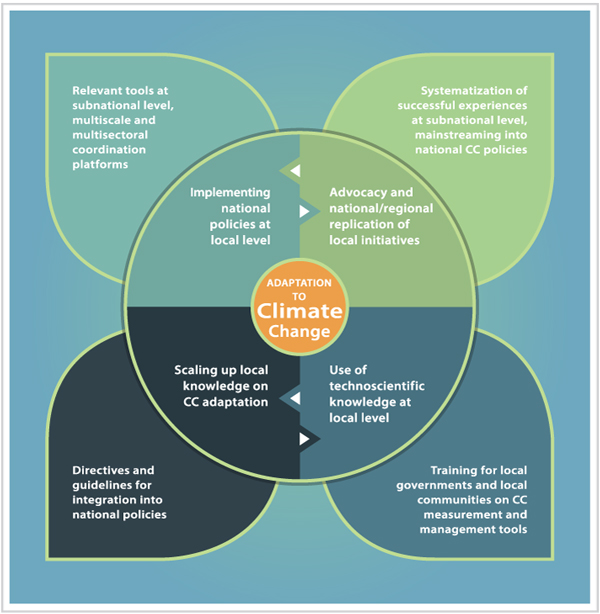People living in mountain regions are among those most exposed to climate change risks. Despite major efforts to promote adaptation, gaps between policies and local responses persist and limit effective pathways toward more resilient mountain communities. In this online dialogue, speakers stressed the importance of involving local communities and using context-specific knowledge to adapt to climate change. They called for multisectoral and multilevel approaches and emphasized the need for tackling inequalities and embedding adaptation actions in a broader vision of resilient development.
In their opening of the inaugural event of the MRD Talks series, MRD Editor-in-Chief Pema Gyamtsho and MRD Associate Editor and moderator of the talk Sarah-Lan Mathez-Stiefel highlighted the crucial role of dialogue between scientists, development practitioners, private-sector representatives, and policymakers in fostering innovative solutions for sustainable and resilient mountain futures.

Participants in the MRD Talk responded to the question “Based on your experience, what are the main challenges for climate change adaptation in mountain regions?” Lack of cooperation, funding, and lack of awareness were the most mentioned challenges.
Mountain environments are particularly vulnerable and under extreme pressure from the climate crisis. With this statement, Ansgar Fellendorf, climate change and mountain ecosystems expert at the United Nations Environment Programme (UNEP), launched the conversation, highlighting UNEP’s focus on nature-based solutions and the efforts of the Adaption at Altitude program to share inclusive mountain adaptation solutions with multiple benefits. He emphasized that practical solutions need to be upscaled and transferred, and further integrated in subnational, national, and regional policy frameworks and financing streams.
The need for governance across different scales was underlined by Emilie Dupuits, Professor of International Relations at Universidad San Francisco de Quito in Ecuador. She presented a framework for multiscale governance and knowledge co-production in designing climate change adaptation policies and plans (Dupuits et al 2022). The framework is based on 7 subnational-level case studies across the Andes. In response to the title question of the Talk, Dupuits recommended that national adaptation policies be developed in a participatory and context-specific way, using tools and practices that enable participatory and community-based monitoring of adaptation measures, and that adaptation approaches incorporate Indigenous knowledge. In her view, this will help bridge the gap between policies and local adaptation efforts.

Dynamics of the dialogue among scales and knowledge in climate change adaptation policies (Dupuits et al 2022).
Graham McDowell, scientist at the universities of Calgary, Canada and Zurich, Switzerland, showed that the adaptation gap is multifaceted and consists of at least three components: the exposure gap, or the gap between the magnitude of all climatic exposures and the sum of all theoretically possible adaptation; the realization gap, or the difference between the theoretically possible level of adaptation and the level of actual adaptation action; and the coherence gap, or the gap between the level of actual adaptation action and the share of these adaptations that are in alignment with established goals and objectives of major agreements relevant to adaptation (eg Paris Agreement, SDGs, Sendai Framework) (McDowell et al 2021). He emphasized that a focus on these three gaps can enrich understanding of the relationship between adaptation and mitigation, help to characterize the extent and appropriateness of existing adaptation efforts, and support the identification of strategic opportunities for ensuring more just and sustainable futures for those living in mountain areas.
In the discussion, Nona Budoyan, Head of the Climate Policy Department at the Ministry of Environment of the Republic of Armenia, considered closing the exposure and coherence gaps to be most relevant for her country. She highlighted the need to develop adaptation programs specifically for mountain communities and implement them quickly, noting, however, that the pace of climate action partly depends on the flexibility of international funds. She further underlined the importance of access to sound information and of integrating national-level actors’ techno-scientific knowledge with community-level actors’ local knowledge for effective adaptation action at all levels. She and her team aim to bridge the gap between national policy and local realities in the Armenian mountains by working with local communities, monitoring and evaluating adaptation programs, and explicitly including a section on adaptation in mountains in Armenia’s regional adaptation plans.

Kevin Kinusu, Managing Director of Africa Bioenergy Programs Limited in Kenya, reflected on the recommendations from a practice perspective. He emphasized the urgency of effective communication and awareness-raising among local communities and policymakers: adaptation action must become a central political discourse at the local level, enabling community members to call on political leaders to act and be accountable. He also highlighted the need to generate knowledge and information across disciplines for impactful climate change adaptation.
MRD associate editor Sarah-Lan Mathez-Stiefel concluded MRD Talk #01 by synthesizing the dialogue into three key messages:
- There is a need for bridging sectors and levels when developing policies, and for linking local policies and programs with national and global ones.
- Initiatives should be embedded in broader goals of increasing resilience and tackling inequalities.
- Indigenous and local communities play a key role, and knowledge on climate change adaptation should be co-produced by all actors concerned.
Overall, MRD Talk #01 offered an opportunity to jointly identify effective ways to foster synergies between local initiatives and adaptation policies for climate change adaptation in mountains.
Presenters
Discussants
Moderators
Resources
MRD articles discussed
- Dupuits E, Llambí LD, Peralvo M. 2022. Implementing climate change adaptation policies across scales: Challenges for knowledge coproduction in Andean mountain socio-ecosystems. Mountain Research and Development 42(2):A1–A11.
- McDowell G, Stevens M, Lesnikowski A, Huggel C, Harden A, DiBella J, Morecroft M, Kumar P, Joe ET, Bhatt ID, et al. 2021. Closing the Adaptation Gap in Mountains. Mountain Research and Development 41(3):A1–A10.
Resources for practice
- Adaptation at Altitude program website
- Adaptation at Altitude Solutions Portal
- UNEP [United Nations Environment Programme] and GRID-Arendal. 2022. Mountains ADAPT: Solutions from East Africa. Nairobi, Kenya: UNEP.
- UNEP [United Nations Environment Programme]. 2022. Mountains ADAPT: Solutions from the South Caucasus. Nairobi, Kenya: UNEP.
- Mountains Connect, an online source of information about transboundary mountain governance for increasing adaptive capacity
Policy resources
- United Nations Environment Assembly. 2022. Resolution adopted by the United Nations Environment Assembly on 2 March 2022: Nature-Based Solutions For Supporting Sustainable Development. UNEP/EA.5/Res.5. Nairobi, Kenya: United Nations.
- Dupuits E. 2021. Políticas de cambio climático en los Andes: diálogo entre escalas y saberes para la adaptación. Propuestas Andinas No. 18. Quito, Ecuador: Adaptación en las Alturas, Programa Bosques Andinos, CONDESAN.
Further scientific resources
- Dupuits E. 2021. Estado actual de las políticas de cambio climático y las estrategias de adaptación en los Andes: una mirada multisectorial desde las montañas. Quito, Ecuador: CONDESAN–COSUDE.
- McDowell G, Harris L, Koppes M, Price MF, Chan KM, Lama DG. 2020. From needs to actions: Prospects for planned adaptations in high mountain communities. Climatic Change 163(2):953–972.
- McDowell G, Huggel C, Frey H, Wang F, Cramer R, Ricciardi V. 2019. Adaptation action and research in glaciated mountain systems: Are they enough to meet the challenge of climate change? Global Environmental Change 54:19–30.








